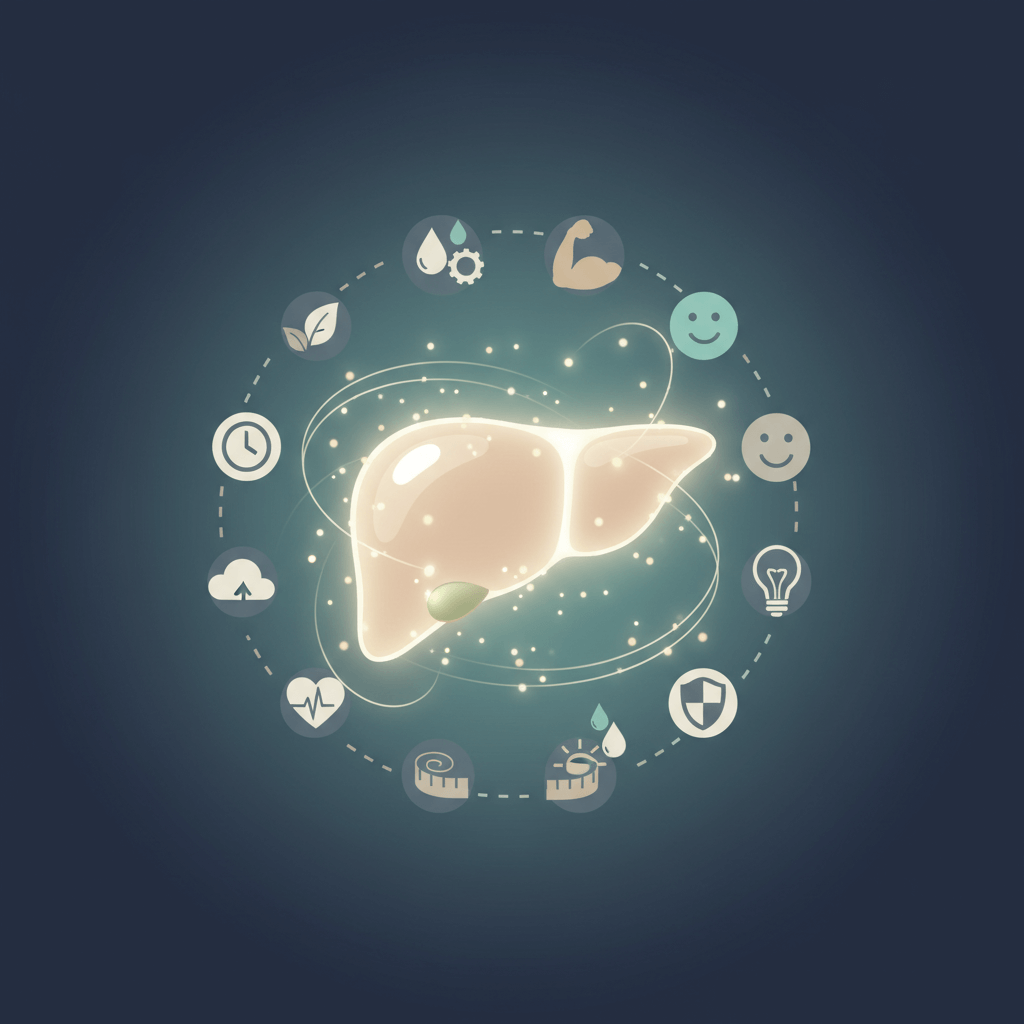Understanding Accidental Addiction to Pain Pills
When it comes to pain medication, it's crucial to understand the concept of accidental addiction. Accidental addiction refers to the unintended development of dependence or addiction to pain pills. It can happen to anyone, regardless of their initial intentions or medical conditions. Let's delve deeper into what accidental addiction is and how it can occur.

What is Accidental Addiction?
Accidental addiction occurs when an individual unintentionally becomes dependent on or addicted to pain pills. It may happen as a result of prolonged use of prescription pain medication or misuse of over-the-counter pain relievers. Accidental addiction can have serious consequences on a person's physical and mental well-being, as well as their overall quality of life.
How Can You Become Accidentally Addicted to Pain Pills?
Several factors can contribute to accidental addiction to pain pills. Understanding these factors is essential in preventing and addressing this issue effectively.
One significant factor is the overprescribing of pain medications. When doctors prescribe pain pills in excessive amounts or for longer durations than necessary, there is an increased risk of unintentional dependence or addiction. This is why it's crucial for healthcare professionals to carefully evaluate each patient's pain management needs and prescribe medications accordingly.
Lack of awareness and education about the potential risks and addictive nature of pain pills is another contributing factor. Many individuals may not fully understand the potential consequences of prolonged use or misuse of pain medications. Education and awareness campaigns play a vital role in informing the public about the risks associated with these medications.
Underlying mental health conditions can also contribute to accidental addiction. Individuals with conditions such as anxiety or depression may turn to pain medication as a way to cope with their emotional distress. This can lead to a cycle of dependence and addiction if not addressed appropriately.
By understanding the concept of accidental addiction and the factors that contribute to it, individuals and healthcare providers can work together to minimize the risk. Proper education, responsible prescribing practices, and addressing underlying mental health conditions are all crucial steps in preventing accidental addiction to pain pills.
Factors Contributing to Accidental Addiction
Accidental addiction to pain pills can occur due to various factors, often stemming from the healthcare system, lack of awareness, and underlying mental health conditions. Understanding these contributing factors is crucial in addressing and preventing accidental addiction.
Overprescribing of Pain Medications
One significant factor contributing to accidental addiction is the overprescribing of pain medications. In some cases, individuals may be prescribed higher doses or longer durations of pain pills than necessary, leading to a higher risk of dependency and addiction. This can occur due to inadequate assessment of pain levels, incomplete understanding of alternative pain management options, or a lack of monitoring and follow-up by healthcare providers.
To address this issue, healthcare professionals should prioritize appropriate pain management and consider non-opioid alternatives whenever possible. Implementing guidelines for prescribing pain medications can help ensure that patients receive the appropriate dosage and duration of treatment, reducing the risk of accidental addiction.
Lack of Awareness and Education
A lack of awareness and education surrounding the risks and potential for addiction associated with pain pills is another contributing factor to accidental addiction. Many individuals may not fully understand the addictive nature of certain pain medications, leading to their misuse or prolonged use beyond the prescribed duration.
Educational initiatives that target both healthcare professionals and the general public are essential in raising awareness about the risks of accidental addiction. These initiatives should focus on providing comprehensive information about the potential dangers of pain pills, including their addictive properties, proper usage, and the importance of seeking professional help if needed.
Underlying Mental Health Conditions
Underlying mental health conditions can also contribute to accidental addiction to pain pills. Individuals who experience chronic pain may be more susceptible to developing mental health issues such as anxiety or depression. In an attempt to alleviate their pain or cope with emotional distress, they may turn to pain medications for relief. This can potentially lead to a cycle of dependence and accidental addiction.
Addressing underlying mental health conditions is crucial in preventing accidental addiction. Healthcare providers should prioritize a holistic approach to pain management, integrating mental health support and therapy alongside appropriate pain medication prescriptions. By treating both the physical and emotional aspects of pain, the risk of accidental addiction can be significantly reduced.
Understanding the contributing factors to accidental addiction is an important step in addressing this issue. By focusing on proper prescribing practices, increasing awareness and education, and addressing underlying mental health conditions, healthcare professionals and individuals can work together to prevent and overcome accidental addiction to pain pills.
Signs and Symptoms of Accidental Addiction
Recognizing the signs and symptoms of accidental addiction to pain pills is crucial in order to seek help and address the issue promptly. While each individual may experience addiction differently, there are common physical, behavioral, and emotional signs to be aware of. These signs can also have a significant impact on daily life and functioning.
Physical Symptoms
Accidental addiction to pain pills can manifest in various physical symptoms. These may include:
- Increased tolerance: Over time, the body may require higher doses of pain medication to achieve the same level of relief.
- Withdrawal symptoms: When attempting to reduce or stop the use of pain pills, individuals may experience withdrawal symptoms such as nausea, sweating, tremors, and muscle aches.
- Physical cravings: The urge to use pain pills can become intense and difficult to resist.
- Changes in appearance: Neglecting personal hygiene and changes in physical appearance can be indicators of addiction.
Behavioral and Emotional Signs
Behavioral and emotional changes are also common indicators of accidental addiction to pain pills. These signs may include:
- Doctor shopping: Seeking pain medication from multiple healthcare providers or engaging in other deceptive practices to obtain prescriptions.
- Preoccupation with medication: Constantly thinking about obtaining and using pain pills, which may lead to a neglect of other responsibilities and interests.
- Increased secrecy: Hiding or lying about the use of pain pills, as well as engaging in deceptive behaviors to maintain a supply.
- Mood swings: Fluctuations in mood, including irritability, anxiety, depression, and agitation, can occur as a result of addiction.
- Social withdrawal: Avoiding social interactions and isolating oneself from friends and family.
- Neglecting obligations: Neglecting work, school, or personal responsibilities due to the focus on obtaining and using pain pills.
Impact on Daily Life
Accidental addiction to pain pills can have a significant impact on an individual's daily life. Some common effects may include:
- Impaired functioning: Difficulties in maintaining a normal routine and fulfilling daily tasks due to the influence of addiction.
- Relationship problems: Strained relationships with family, friends, and colleagues, often resulting from behavioral changes and the prioritization of obtaining and using pain pills.
- Financial difficulties: The cost of obtaining pain pills can lead to financial strain, potentially causing problems with budgeting and debt.
- Legal issues: Engaging in illicit activities, such as theft or prescription fraud, to obtain pain pills can result in legal consequences.
Recognizing these signs and symptoms is crucial in identifying accidental addiction to pain pills. If you or someone you know is experiencing these indicators, seeking professional help is essential for treatment and recovery.
Overcoming Accidental Addiction
If you find yourself accidentally addicted to pain pills, it's important to remember that recovery is possible. Overcoming addiction requires a multifaceted approach that addresses both the physical and psychological aspects of the addiction. In this section, we will explore three key steps in the journey to overcoming accidental addiction: seeking professional help, developing a comprehensive treatment plan, and utilizing support systems and resources.
Seeking Professional Help
When facing accidental addiction to pain pills, seeking professional help is a crucial first step. A healthcare professional or addiction specialist can provide guidance, support, and evidence-based treatment options tailored to your specific needs. They can help evaluate the severity of your addiction, assess any underlying mental health conditions, and determine the most appropriate course of action.
Developing a Comprehensive Treatment Plan
A comprehensive treatment plan is essential for addressing the complex nature of accidental addiction. This plan may include a combination of therapies, medications, and lifestyle changes. It is important to work closely with your healthcare provider to develop a plan that suits your individual circumstances.
Treatment OptionsBehavioral TherapiesCognitive-Behavioral Therapy (CBT)Contingency Management (CM)Motivational Interviewing (MI)Medication-Assisted Treatment (MAT)Support Groups (e.g., Narcotics Anonymous)Holistic Approaches (e.g., yoga, meditation)
Support Systems and Resources
Building a strong support system is crucial during the recovery process. Surrounding yourself with understanding and supportive individuals can provide encouragement and accountability. Support groups, such as Narcotics Anonymous, can be particularly beneficial, as they offer a sense of community and the opportunity to connect with others who have faced similar challenges.
Additionally, there are various resources available to assist individuals in overcoming accidental addiction. These resources may include helplines, online forums, educational materials, and treatment centers. Utilizing these resources can provide valuable information, guidance, and additional support throughout your recovery journey.
Resources
Helplines (e.g., Substance Abuse and Mental Health Services Administration helpline)
Online Forums and Support GroupsEducational Materials (e.g., brochures, websites)
Treatment Centers and Rehabilitation Facilities
Remember, overcoming accidental addiction to pain pills is a process that requires patience, commitment, and professional guidance. By seeking help, developing a comprehensive treatment plan, and utilizing support systems and resources, you can take the necessary steps towards recovery and reclaim a healthier, fulfilling life.
Prevention and Harm Reduction
When it comes to accidental addiction to pain pills, prevention and harm reduction strategies play a vital role in minimizing the risks and promoting overall well-being. By focusing on proper pain management, education and awareness, and safe medication practices, individuals can take proactive steps to reduce the likelihood of accidental addiction.
Proper Pain Management
Proper pain management is an essential component in preventing accidental addiction to pain pills. It involves a comprehensive approach that aims to address pain effectively while minimizing the use of potentially addictive medications. Healthcare professionals should consider the following strategies:
- Multimodal Pain Management: Using a combination of non-opioid pain relievers, physical therapy, and alternative therapies such as acupuncture to manage pain.
- Individualized Treatment Plans: Tailoring pain management plans to the specific needs of each patient, taking into account factors like the type and severity of pain, medical history, and risk of addiction.
- Regular Monitoring: Periodically reassessing the effectiveness of pain management strategies and making adjustments as needed to ensure optimal pain relief.
Education and Awareness
Education and awareness are crucial in preventing accidental addiction to pain pills. By providing accurate information and promoting understanding, individuals can make informed decisions about pain management and medication use. Key aspects of education and awareness efforts include:
- Public Campaigns: Conducting public campaigns to raise awareness about the risks of pain pill addiction, proper pain management, and the availability of alternative treatments.
- Patient Education: Ensuring that patients receive clear and comprehensive information about the potential risks and benefits of pain medications, as well as non-opioid alternatives.
- Healthcare Provider Training: Providing healthcare professionals with ongoing training on responsible prescribing practices, recognizing signs of addiction, and appropriate interventions.
Safe Medication Practices
Adhering to safe medication practices is essential for reducing the risk of accidental addiction to pain pills. This involves responsible medication use and proper disposal of unused medications. Here are some key practices to consider:
- Follow Prescribing Instructions: Take pain medications exactly as prescribed by a healthcare professional, following the recommended dosage and frequency.
- Avoid Sharing Medications: Never share prescription pain pills with others, as this can lead to misuse or accidental addiction.
- Proper Disposal: Dispose of unused or expired medications properly by utilizing drug take-back programs or following guidelines for safe disposal at home.
By focusing on prevention and harm reduction strategies, individuals can minimize the risk of accidental addiction to pain pills. Proper pain management, education and awareness, and safe medication practices are key pillars in promoting responsible and safe use of pain medications.
Sources
How opioid use disorder occurs
The Accidental Addict | Addiction Treatment
Accidental Addiction and the Opioid Epidemic
Related Articles
- L484 Pill: Uses, Side Effects, and Identification Guide
- What Are M367 Pills? Analyzing the Uses and Risks
- AN 627 Pill Identifier: Uses, Side Effects, and Risks of This Tramadol Pill
- M365 White Oblong Pill: Uses, Side Effects, and Risks Explained
If You’re Looking for Help
If you or someone you love is struggling with hydrocodone misuse, prescription opioid dependence, or other substance-use issues, help is available.
At Prescott House, we specialize in long-term, evidence-based treatment for men facing addiction to opioids, prescription medications, and co-occurring mental health disorders. Our clinically driven approach addresses not just the substance, but the underlying emotional, psychological, and behavioral patterns that fuel addiction.
If you're ready to take the next step, contact our admissions team. All conversations are confidential, and we can help guide you toward the safest, most effective treatment options.
Related Information on Opioid & Prescription Drug Addiction
Explore more resources about opioid misuse, prescription-pill risks, and long-term addiction treatment:
- Long-Term Addiction Treatment for Men — Why extended care is especially effective for opioid and prescription medication addiction.
- Opiate Addiction Treatment — A deeper look at how opioid addiction develops and the treatment approaches that work best.
- Opioids vs. Opiates: What’s the Difference? — Understand the distinctions between these drug classes and why both carry serious addiction risks.
- Prescription Pills: Hidden Dangers Behind Common Medications — Learn how seemingly safe medications can lead to dependency when misused.
- Signs It’s Time to Seek Treatment — How to recognize when opioid or prescription-pill use has crossed the line into addiction.













